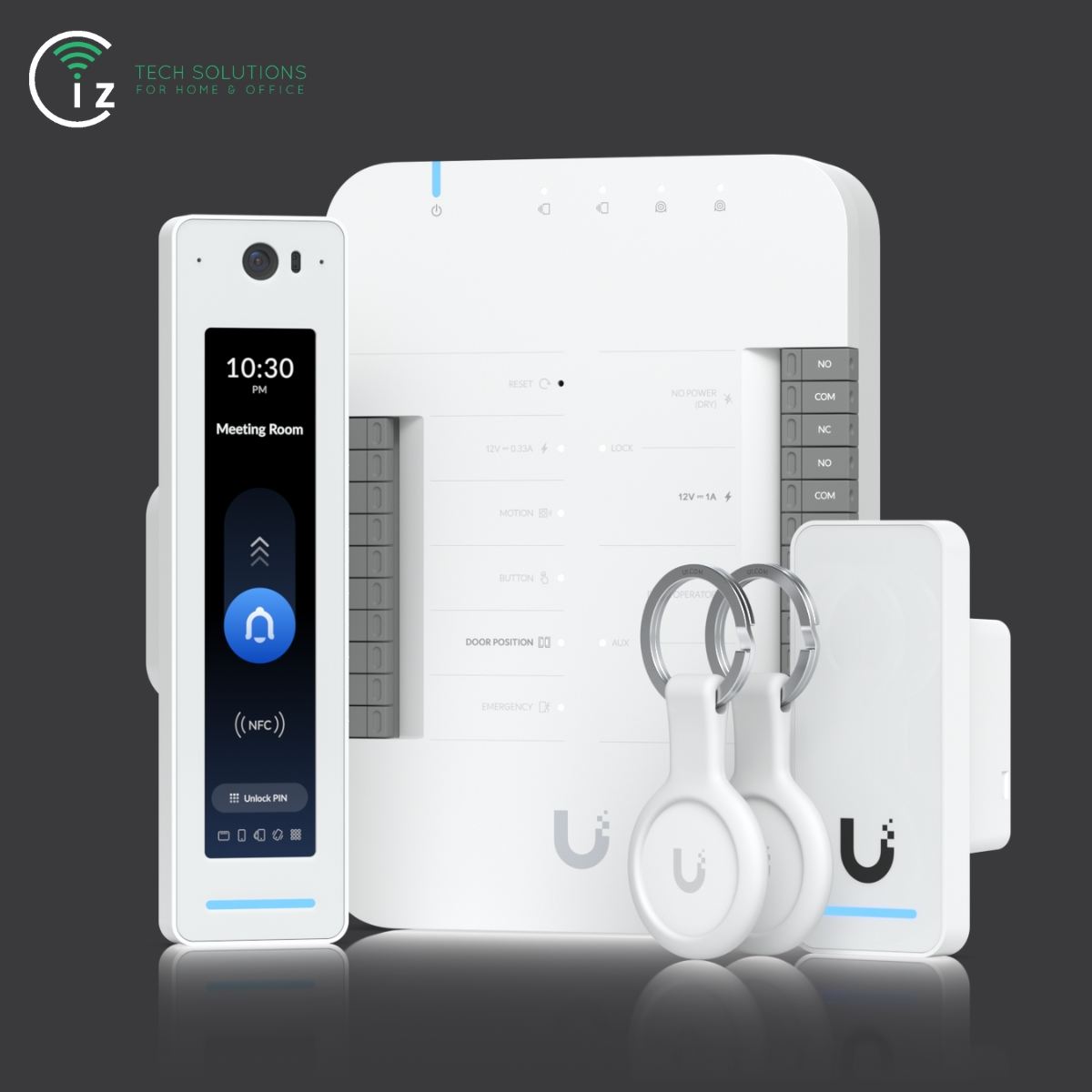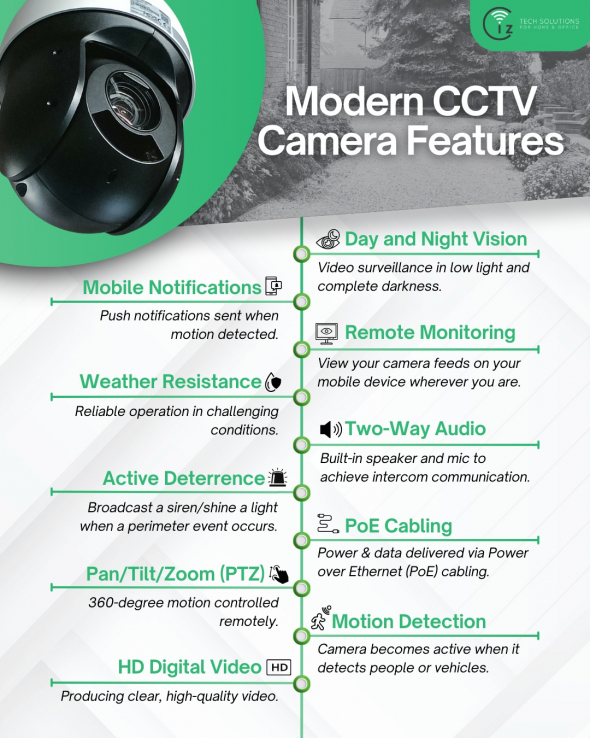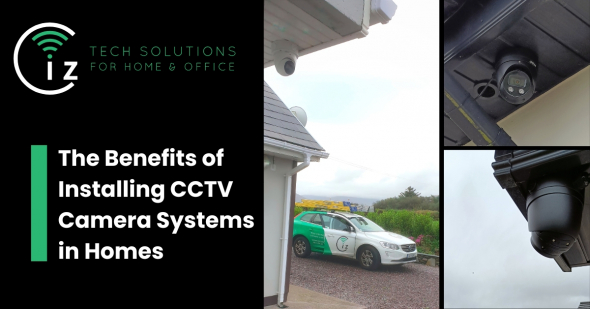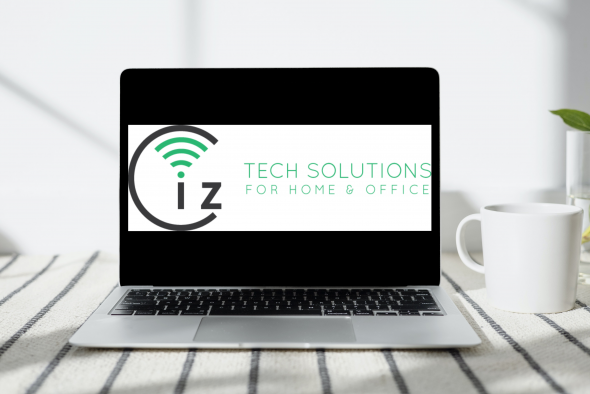What is Door Access Control?
An Access Control System is a security solution that regulates who can enter or exit a building, room, or restricted area. Compared to traditional security methods like locks and keys, Access Control Systems offer a more secure, flexible, and efficient way to manage access.
How Does Door Access Control Work?
At the heart of an access control system is the access control panel or control unit/hub. This central unit processes information and controls the entire system. When a user wants to access a secured area, they present a credential to a reader device, such as a card reader or biometric scanner.
The reader captures the user's credentials, then transmits it to the access control panel. The panel then authenticates the credentials, verifying their validity. If the credential is valid, the panel authorises access, sending a signal to unlock the door. This process ensures that only authorised individuals can gain entry.
Features of a Door Access Control System:
Authentication Methods:
- Key Cards/Fobs: Easily programmable and replaceable, key cards and fobs are common for secure, authorised access.
- Biometric Scanning: Uses fingerprint, facial recognition, or iris scans for high-security environments, ensuring that only the right individuals gain access.
- PIN Codes: A simple method where users enter a unique code, often combined with other authentication methods for added security.
- Mobile Access: Allows users to unlock doors using their smartphones, offering convenience and flexibility.

Access Control Panels:
- Central units that connect and control all access points, enabling real-time monitoring and management of all door locks.
Remote Management:
- Administrators can manage and monitor access remotely through a web-based interface or mobile app, providing flexibility and immediate response to security events.
Time-Based Access Control:
- Allows administrators to define specific times when individuals can access certain areas, improving security during off-hours.
Audit Trails and Reporting:
- Provides detailed logs of who accessed a door and when, helping in compliance, investigations, and overall security management.
Intercom:
- Speak to visitors before allowing access remotely. Particularly useful if you are not in a position to get to the door.

Visitor Management:
- Tracks and manages visitors within the premises. Providing temporary access credentials that expire after a specific time.
Scalability:
- Whether it's a small office or a large multi-site organisation, Access Control Systems can be scaled to meet the needs of any business, growing alongside the organisation.
Customisable User Permissions:
- Allows for the creation of different access levels, ensuring that employees can only access the areas necessary for their role.
Emergency Lockdown Capabilities:
- In the event of a security threat, the system can initiate a full or partial lockdown, restricting or controlling access to secure areas.
Integration with Other Security Systems:
- Can be integrated with CCTV, Intruder Alarm systems, and Fire Alarms for a comprehensive security solution.

Use Cases for Access Control Systems
Access Control Systems are widely used in various settings:
Residential Applications
- Smart Homes: Control access to specific rooms or areas, enhancing security and convenience.
- Holiday Homes: Monitor and control access remotely, ensuring peace of mind
Commercial Applications
- Offices: Secure sensitive areas, and improve workplace efficiency.
- Childcare facilities: Manage access to the building, even when busy with children away from the main door. Use the intercom, to speak to visitors before allowing access.
- Retail Stores: Limit access to backrooms and storage areas, reducing the risk of theft.
- Warehouses: Control access to inventory and high-value goods, minimising loss and damage.
- Healthcare facilities: Secure patient rooms and restricted areas, protecting patient privacy and safety.
Benefits of Door Access Control
- Enhanced Security:
- Controlled Access: Restrict access to authorised individuals, minimising the risk of unauthorised entry.
- Audit Trails: Monitor and track access activity, providing valuable insights for security analysis.
- Increased Convenience:
- Remote Access: Control access remotely, allowing for flexible management of access permissions. Users can easily be added/removed.
- Keyless Entry: Eliminate the need for physical keys, reducing the risk of lost or stolen keys and ultimately the need to replace locks.
- Cost-Effective:
- Reduced Labour Costs: Automate access control processes, reducing the need for manual intervention.
- Improved Efficiency: Streamline access and security operations, saving time and resources.
- Compliance and Regulation Adherence:
- Helps businesses comply with industry regulations and standards, particularly in sectors that require strict access controls like healthcare or finance.
Choosing the Right Access Control System
When selecting an Access Control System, you may want to consider the following factors:
- Scale of the Property: The size and complexity of your property will influence the system's requirements.
- Level of Security Required: Determine the level of security needed for different areas, such as high-security zones or general access areas.
- Budget: Consider the initial cost of the system, as well as ongoing maintenance and operational expenses.
- Integration with Other Systems: Ensuring compatibility with other security systems, such as CCTV and Intruder Alarm Systems, for a comprehensive security solution.
Closing Remarks
Door Access Control systems are a critical bit of technology for many organisations aiming to safeguard their assets, protect their people, and streamline operations. By offering a range of features from basic authentication to advanced integration and remote management, these systems provide enhanced security.
It is also worth noting the convenience that these systems provide. When integrated with CCTV and with an built in intercom, you don’t need to go to the front door to let a visitor in. In addition, fobs and key cards are easily programmed to add/remove users.




